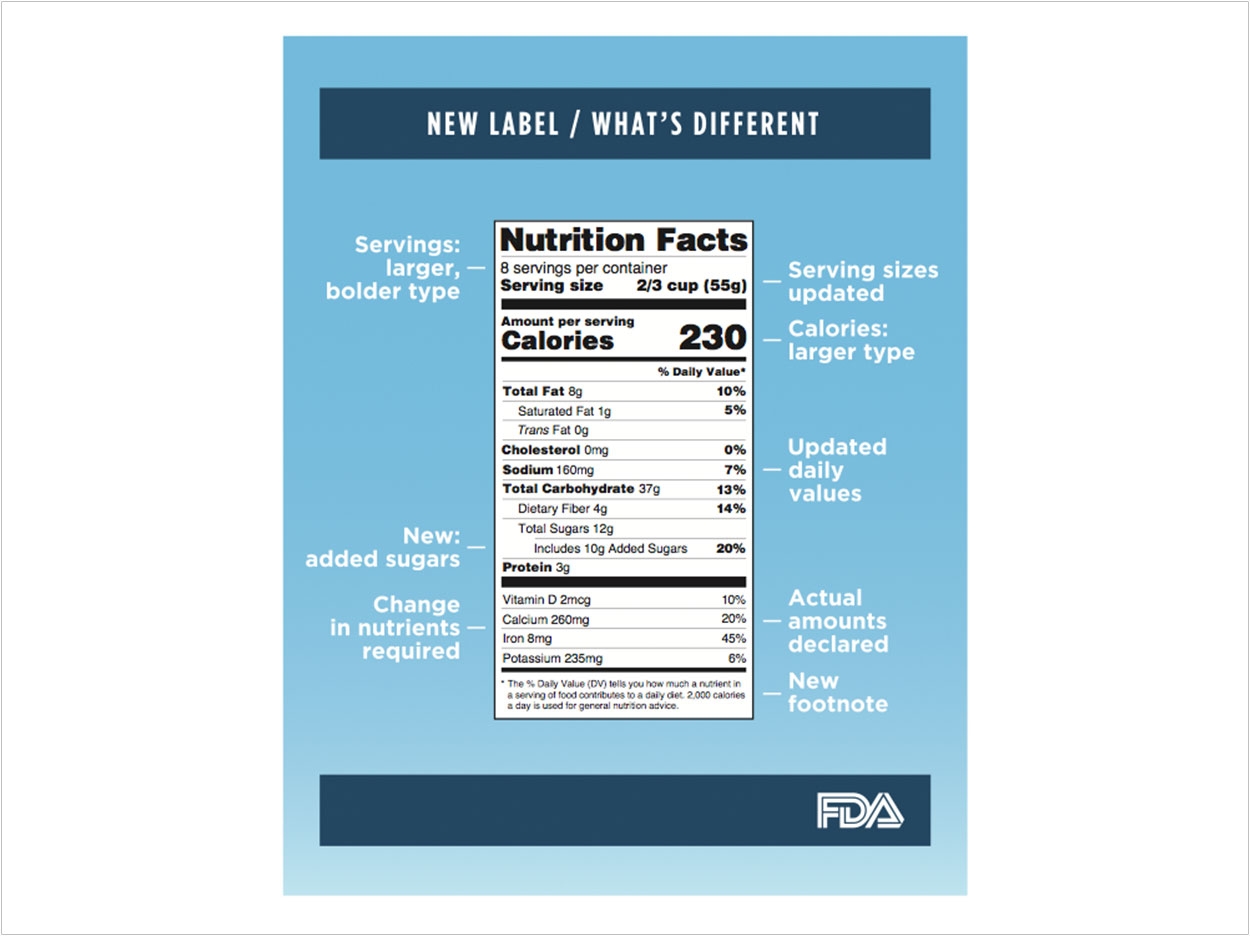
The nutrition label included on packaged food in the United States is about to get a makeover with a spotlight on added sugars among other changes, courtesy of the US Food and Drug Administration (FDA).
“For more than 20 years, Americans have relied on the Nutrition Facts label as a leading source of information regarding calories, fat, and other nutrients to help them understand more about the foods they eat in a day,” said FDA commissioner Robert Califf, MD.
“The updated label makes improvements to this valuable resource so consumers can make more informed food choices—one of the most important steps a person can take to reduce the risk of heart disease and obesity,” Califf said.
In their 2015-2020 Dietary Guidelines for Americans, the US Department of Health and Human Services and Department of Agriculture recommend a limit of less than 10% of calories per day from added sugars.
These departments define added sugars as sugars and syrups that are added to foods or beverages when they are processed or prepared. In addition to heart disease and obesity, these additives increase consumers’ risks for diabetes and tooth decay.
“We need more data about the extent to which dental caries rates fluctuate with changes in total added sugar consumption and over what periods of time,” said Dr. Carol Gomez Summerhays, president of the ADA. “Until we have better data, limiting added sugar intake to less than 10% of energy intake seems like a reasonable public health goal.”
The new label will list the total amount of sugar per serving in grams as well as the total amount of added sugars, also in grams, plus the percentage of the recommended daily value that these sugars represent based on a 2,000-calorie daily diet.
“For years, we’ve encouraged consumers to monitor—and minimize—their added sugar intake,” said Gomez Summerhays. “Now they can do so simply by reading a nutrition label.”
The new label design also will highlight calories and servings with requirements for serving sizes that more closely reflect the amounts of food that people actually eat. These habits have changed since the last serving size requirements were published in 1993.
The daily values for nutrients like sodium, dietary fiber, and vitamin D also have been updated to be consistent with Institute of Medicine recommendations and the 2015-2020 Dietary Guidelines for Americans. Calories from fat have been removed, because research shows that the type of fat is more important than the amount.
“I am thrilled that the FDA has finalized a new and improved Nutrition Facts label that will be on food products nationwide,” said First Lady Michelle Obama. “This is going to make a real difference in providing families across the country the information they need to make healthy choices.”
Most food manufacturers will be required to use the new label by July 26, 2018. Manufacturers with less than $10 million in annual food sales will have an additional year to comply with the new rules. The FDA will conduct outreach and education about the new requirements.
Related Articles
Food Guidelines Include New 10% Limit on Sugar
App Tells You How Much Sugar Is in Your Food
Treat Obesity to Improve Oral Health












